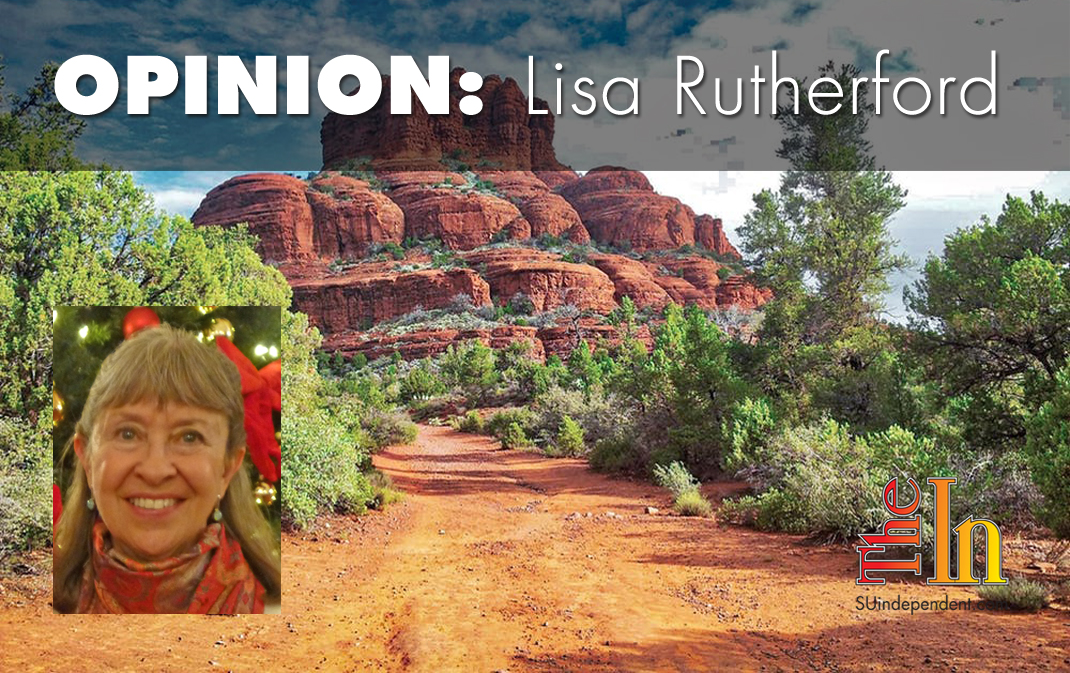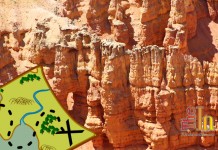
Washington County’s opportunity zones: “opportunity” for whom?
Opportunity zones were created when the Tax Cuts and Jobs Act was passed by Congress and signed by President Trump in December 2017. The act specifically states: “(Sec. 13823) This section authorizes the designation of opportunity zones in low-income communities and provides various tax incentives for investments in the zones. Taxpayers may temporarily defer the recognition of capital gains that are invested in opportunity zones.” Utah’s Senator Hatch co-sponsored the act.
On the face of it, this sounds good, right? Help areas that need help.
Governor Herbert worked with county and local leaders to identify opportunity zones in Washington County based on existing census tracts. This resulted in Washington County getting two opportunity zones.
The largest opportunity zone includes Red Cliffs National Conservation Area and Red Cliffs Desert Reserve, much public land along Highway 18, and the Shivwitz Reservation. The second and smallest zone is south of St. George Boulevard and includes Dixie State University.
Even given the census-tract qualification, these two areas seemed very odd to me — the one because it includes “protected” public lands with understandably no population and the other in a well populated area of St. George. DSU students don’t qualify as residents, so the area was able to be included. But according to IRS information, the two zones are listed as “low-income community” areas. That may apply to the public lands, Shivwitz reservation, and areas along Highway 18, perhaps with exception of Dammeron Valley, but the DSU area seems questionable.
According to the IRS, opportunity zones were established to help provide tax breaks for investors while directing taxable capital gains money to economically-distressed areas, stating clearly that ”Opportunity Zones are an economic development tool — that is, they are designed to spur economic development and job creation in distressed communities.”
I do not see the DSU area as economically distressed. In fact, DSU is the most quickly growing university in Utah, and it turns out that DSU’s “Innovation Plaza” is the focus of this effort to direct money to the area.
I am not against Innovation Plaza, which is going great guns according to a July 2018 St. George News article: “The U.S. Department of Commerce’s Economic Development Administration announced June 21 that it had awarded $876,000 to Dixie State’s Innovation Plaza project so it can purchase equipment and support networking activities for the facility’s launch.”
However, I am against using a tax-break feature of the 2017 tax reform act to gain access to money that according to the act’s language is meant to support those in real need. In all fairness, Innovation Plaza’s goal is to create better jobs for our area, but it remains to be seen if that will occur. This county, even with all the growth seen over the past 20 years, has not seen much improvement in wages, even as housing prices increase.
I’m not the only one concerned about the opportunity zone idea. Economist Jared Bernstein, a senior fellow at the Center on Budget and Policy Priorities and author of “The Reconnection Agenda: Reuniting Growth and Prosperity,” was an early contributor to this idea due to the scarcity of capital in places with great need and an inability of low-income people to “move to a better place.”
Although he suggests that we give opportunity zones a chance, he advises that their progress should be scrutinized and that the Treasury should dictate strong reporting requirements. His biggest concern — and perhaps the biggest hope of investors — is that Treasury fails to collect adequate data to evaluate relevant outcomes, resulting in just another method of sheltering capital gains. That would be another loss for those truly in need and another feather in the cap of those who support the rich over the needs of the poor. Bernstein notes that some zones were poorly chosen, thereby raising the possibility that areas already on stable footing are being subsidized, which is my point with the DSU area being in one of our Washington County Opportunity Zones.
A “glitch” in the law “allows governors to nominate up to 5 percent of better-off places next to low-income ones.” This could allow such areas to absorb a disproportionate share of the opportunity zone money, leaving other truly needy areas lacking. Some mayors are actually working to figure out how to use their opportunity zones to address the lack of affordable housing, such as in Boulder, Colorado. As Jared Bernstein noted, “If OZs turn out to largely subsidize gentrification, if their funds just go to places where investments would have flowed even without the tax break, or if their benefits fail to reach struggling families and workers in the zones, they will be a failure.”
Additionally, what about the public land that’s targeted in the largest Washington County opportunity zone? How could these designations affect property and appraisal values of SITLA land and private inholdings that remain in public land areas? Were the Bureau of Land Management, the U.S. Fish and Wildlife Service, the Division of Wildlife Services, and the Habitat Conservation Plan administration consulted during the nomination process? If so, what was and where is their input?
Perhaps of most concern for the public land is the question of opportunity zone designations might encourage development on these lands and potentially allow violation of the current Habitat Conservation Plan. In fact, with the Habitat Conservation Plan currently under renewal, will those who are rewriting the plan allow loopholes that would enable the opportunity zone designation to do harm?
In 2006, county leaders with the help of congressional members attempted to convert 25,000 acres of BLM land to county ownership. Is this opportunity zone designation just the latest in attempts to secure these lands?
The Utah Association of Counties is working with the Governor’s Office of Economic Development and the Sorenson Impact Center, through their representative Patrick Mullen, according to the office’s December 17, 2018 press release. Their threefold responsibility starts with “engaging and educating rural communities housing Opportunity Zones.” Yet of the 46 zones identified in Utah, only 19 are in rural communities. “Hurting communities” and “communities that have been left behind” are referenced in the office’s press release. Certainly, Washington County, as one of the most quickly growing areas in the nation, is not “hurting” or “left behind.” That’s not to say that we don’t have people in need in this county. We certainly do as is witnessed by our homeless and low income populations, but the opportunity zone areas identified do not seem to be positioned to help those populations. Are these two census areas the poorest in the county and most deserving of a tax subsidy to stimulate development?
With local leaders so focused on growth at any cost, are they in a position — or even willing — to provide good oversight on investments and development in these opportunity zones? What kind of pressure will investment money coming to the area put on local leaders to amend zoning ordinances and make decisions that are not in keeping with what’s best for our area? We’ve seen the flow of money into poor area in other locales lead to “gentrification” with rising property values driving existing residents out. Will that be what we see here, where property values area already skyrocketing make housing unaffordable for many?
A Jan. 10 public hearing on opportunity zones was scheduled, but it was cancelled due to the government shutdown while investors waited for the Treasury Department to finalize guidance. The hearing was finally held Feb. 14:
—Witnesses testifying at the packed hearing included state cabinet officials as well as representatives from state economic development groups, small businesses, community reinvestment coalitions, investment funds, and technology and planning organizations. Testimony focused on ensuring that program regulations maximize investment and economic growth by generating new development, capital, and jobs in the distressed communities where opportunity zones are located.
—There was also a clear call by all in attendance for clarity and flexibility in the next round of rules. Suggestions included modifying the rules to provide more flexibility to investors when exiting Qualified Opportunity Fund investments, which is currently limited to a sale of the Qualified Opportunity Fund investment itself; loosening restrictive sourcing and location rules for opportunity zone business income; and allowing Qualified Opportunity Funds to reinvest interim gains within a reasonable time period without triggering a taxable event.
Critics make it clear that “there’s no requirement that investments in opportunity zones benefit the community.” And what will these tax breaks for the rich cost our nation? According to Bloomberg Businessweek, “When the bill was being considered, the Joint Committee on Taxation told Congress that the opportunity zone tax breaks would cost about $1.6 billion through 2027. But the figure would rise after that, as developers claim capital-gains exemptions on the sale of projects in opportunity zones held for more than a decade. Since the program is open-ended, the final tally will ultimately depend on how much money investors plow into opportunity zones and the gains that they realize.”
Over $100 billion in private capital will flow into opportunity zones around the nation, according to Treasury Secretary Steven Mnuchin. A Richmond, Virginia paper, the Richmond-Times Dispatch, noted, “This obscure tax code benefit is essentially giving commercial real estate a turbo boost of energy in the form of dollars just at the point when everyone thinks the party should be winding down. The maximum benefit requires investors to get dollars to work in 2019, which also creates an immediacy that should benefit certain areas and projects.”
Utah leaders should explain their rationale for identifying these areas in our county since many questions remain. Growth in Washington County does not need this steroid injection.
The viewpoints expressed above are those of the author and do not necessarily reflect those of The Independent.
How to submit an article, guest opinion piece, or letter to the editor to The Independent
Do you have something to say? Want your voice to be heard by thousands of readers? Send The Independent your letter to the editor or guest opinion piece. All submissions will be considered for publication by our editorial staff. If your letter or editorial is accepted, it will run on suindependent.com, and we’ll promote it through all of our social media channels. We may even decide to include it in our monthly print edition. Just follow our simple submission guidelines and make your voice heard:
—Submissions should be between 300 and 1,500 words.
—Submissions must be sent to editor@infowest.com as a .doc, .docx, .txt, or .rtf file.
—The subject line of the email containing your submission should read “Letter to the editor.”
—Attach your name to both the email and the document file (we don’t run anonymous letters).
—If you have a photo or image you’d like us to use and it’s in .jpg format, at least 1200 X 754 pixels large, and your intellectual property (you own the copyright), feel free to attach it as well, though we reserve the right to choose a different image.
—If you are on Twitter and would like a shout-out when your piece or letter is published, include that in your correspondence and we’ll give you a mention at the time of publication.
Articles related to “Washington County’s opportunity zones: “opportunity” for whom?”
Being engaged in the political process can be more than frustrating
Northern Corridor is not the only threat to our beloved Red Cliffs Desert Reserve



